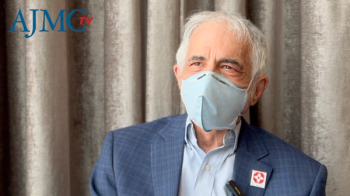
Tezepelumab (Tezspire) improves symptoms, reduces surgery needs, and lowers steroid use in patients with chronic rhinosinusitis with nasal polyps (CRSwNP).

Tezepelumab (Tezspire) improves symptoms, reduces surgery needs, and lowers steroid use in patients with chronic rhinosinusitis with nasal polyps (CRSwNP).

Phenotyping patients can help to identify potential heart failure with preserved ejection fraction (HFpEF) as well as improve patient outcomes.

Guidelines that encouraged the exposure of peanuts in children were found to significantly reduce food allergies.

Intensivists gathered at the CHEST 2025 Annual Meeting to discuss how climate change is affecting and will affect their practice of treating pulmonary conditions.

Results from the ASPEN trial also show that brensocatib displayed several benefits when used in patients with bronchiectasis, including a reduction in symptom burden.

Experts at ESMO Congress highlighted the urgent need for open discussions on sexual health post cancer treatment, emphasizing its impact on quality of life.

Colorblind energy devices and long-wavelength lasers are safest for darker skin, says Ariella Kauvar, MD, with a thorough patient history and physical exam key to preventing complications.

Adjuvant abemaciclib (Verzenio; Eli Lilly) plus endocrine therapy prolonged survival in high-risk HR-positive, HER2-negative early-stage breast cancer.

Researchers identify FGFR4, FLT1, and WNT5A as key biomarkers and suggest dovitinib and nintedanib as new targeted therapies for colorectal cancer.

Atomic force microscopy successfully identified nanomechanical changes in fibrotic lung tissue.

Patients successfully self-administer rozanolixizumab for generalized myasthenia gravis (gmG), preferring manual push delivery over infusion pumps in a phase 3 trial.

Metallomic correlations suggest environmental and metabolic metals act together to accelerate renal damage.

Integrated data suggest higher tryptophan activity is associated with reduced inflammation and improved outcomes in RA.

Lesion-based disconnectome mapping suggests that the pattern, not the quantity, of brain damage determines cognitive outcomes in patients with MS.

Education on birth control and its potential adverse effects is vital to women choosing the type that best suits them.

Panels at the conference include coverage of new guidelines, the use of AI in pulmonary care, and progress on respiratory vaccines.

Face paint offers fewer chances at eye injury along with more freedom of movement when dressing up for Halloween.

Coverage of our peer-reviewed research and news reporting in the health care and mainstream press.

Papillary muscle scarring (papSCAR) was found to be associated with increased risk of cardiac death in patients with dilated cardiomyopathy

Arielle Kauvar, MD, says pre- and post-treatment care helps prevent hyperpigmentation and complications from laser procedures for all skin types, including skin of color.

Women who received the mRNA COVID-19 vaccine in their first trimester did not have an increased risk of their child having a major congenital malformation.

A new report shows Vermont, Utah, and Minnesota lead, while Louisiana, Mississippi, and Kentucky lag in Medicare performance.

Digital tools help prevent burnout, anxiety, and exhaustion among health care workers.

The government should focus on keeping up the funding for HIV to continue to innovate in this space, potentially eliminating the virus altogether.

Persistent racial, ethnic, and socioeconomic disparities affect the incidence and mortality of major female-specific cancers in the US.

Patients beginning their cancer journeys should advocate for themselves and use support groups to help navigate survivorship challenges.

Measures need to be taken to elevate engagement both from employees and the general public as public confidence in the US health care system declines.

Aspects of the average Halloween costume could pose risks to the corneal health of the eye if not applied correctly.

Nirsevimab significantly reduced RSV hospitalizations in infants, reinforcing public health recommendations for its use during the RSV season.

Long COVID is most common among adults with chronic conditions, lower physical activity, and incomplete vaccination, and who live in certain US regions.

259 Prospect Plains Rd, Bldg H
Cranbury, NJ 08512
© 2025 MJH Life Sciences®
All rights reserved.
